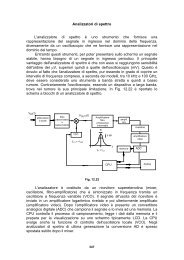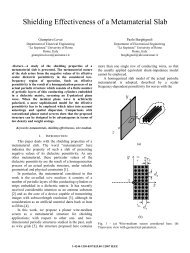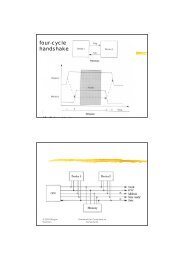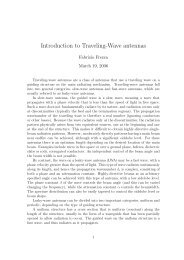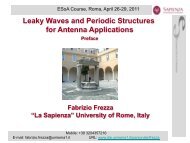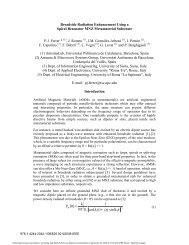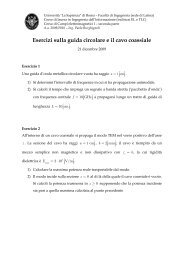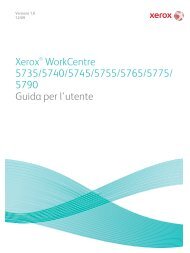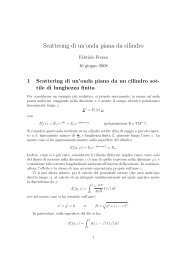Materials Measurement Phil Bartley Shelley Begley
Materials Measurement Phil Bartley Shelley Begley
Materials Measurement Phil Bartley Shelley Begley
- No tags were found...
You also want an ePaper? Increase the reach of your titles
YUMPU automatically turns print PDFs into web optimized ePapers that Google loves.
Relaxation Constant ττ = Time required for1/e of an alignedsystem to return toequilibrium or randomstate, in seconds.ε100'r10Water at 20 o Cτ1 1 =ω 2πc f c"ε rmost energy is lost at 1/τ=1110 100f, GHzDebyeequation :ε ( ω)εs−εε∞+1+jωτ=∞Of interest to material heating is the relaxation constant or time, τ. Fordipolar dielectrics (such as water), τ describes the time required for dipolesto become oriented in an electric field. (Or the time needed for thermalagitation to disorient the dipoles after the electric field is removed.)•At low frequencies, the dipole rotation can follow the field easily; ε’ will behigh and ε” will be low. As the frequency increases, the loss factor, ε”increases as the dipoles rotate faster and faster.• The loss factor ε” peaks at the frequency 1/τ. Here, the dipoles are rotatingas fast as they can, and energy is transferred into the material and lost to thefield at the fastest possible rate.•As the frequency increases further, the dipoles can not follow the rapidlychanging field and both ε’ and ε” fall off.τ is one of the terms needed in the Debye equation that is often used tomodel the theoretical permittivity of polar liquids. This model works very wellfor water. The other terms are the predicted value of ε s , the DC or staticvalue of permittivity, and ε at infinity.21




